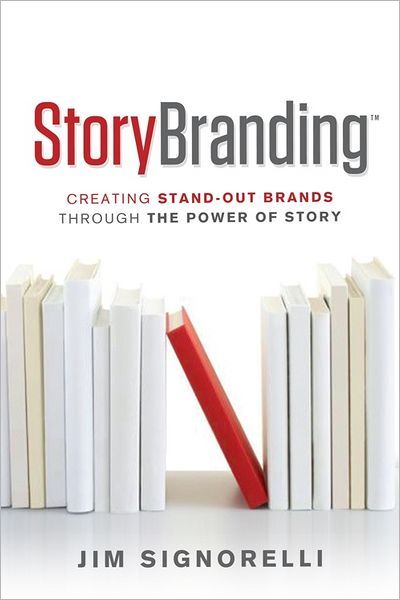
Ad man Jim Signorelli believes in the power of a tale well told. Today's technology makes it easier for stories to be told in a variety of ways but sometimes the message can get lost amid the media. Facebook, Twitter, YouTube and blogging are just some of the ways to get a story out to the world but the story itself needs to be powerful and simple enough to gain its space on an increasingly cluttered stage. Signorelli brings story back to its essence, defining it as a narrative in which a character dealing with an obstacle achieves an important goal. For brands, story represents a compelling way to deliver a brand's truth. The best brand stories, Signorelli shows, are truths the consumer already understands and identifies with. The goal is to create enduring brand associations that lead to a life-long loyalty which is expressed through the repeated purchase of products over time.
Finding the back story
Storybranding it seems is part inspiration and part excavation, a process of figuring out what the back story is before constructing a new narrative. It's akin to the writing exercises that some novelists perform, creating detailed character studies and past narratives that never make it to the printed page. As a novelist seeks the core of the story, the central idea which is easily expressed, the storybrander seeks to find the single value that is most true in a company or organization. Signorelli takes the reader through the process of identifying the brand's archetype and then aligning the brand's core message with its outward expression. Signorelli also applies this approach to the prospect, the idea is to create a target consumer and then make sure that the alignment between company and customer exists on a deep level. Part of the way he does this is through the use of archetypes, powerful, universal patterns that speak to people on a deep level.
Getting beyond the product
Part of the process is about figuring out ways to increase identification between the brand and the prospect. The goal is what is termed as Level IV identification, a state in which the prospect is so identified with the brand that the product features almost become incidental on the road to purchase. This seems to be the desired state for most luxury brands, purchasing is almost automated at this point, the desire for the brand itself is so deeply rooted in the customer's mind and heart. Luxury brands have been keenly aware of this for years and have used their traditions and stories of craftsmanship, service and attention to detail to help the contribute to the overall belief that the customer needs to be associated with the particular brand. In fact many of the top brands such as Hermes, Louis Vuitton and Cartier have carefully curated backstories and and a keen sense of what their customers want both from the products and from the feeling of being associated with the brand.
The book is easy to navigate with short chapters and end-of-chapter reviews, and could easily serve as a guidebook for a team seeking to hone the focus of a new brand or reinvigorate an existing one. What's nice about Signorelli's approach is that he gets to the heart of the matter, eschewing laundry lists of benefits and features and instead helping distill a brand to its true core and crafting that core so that it resonates powerfully with consumers.









